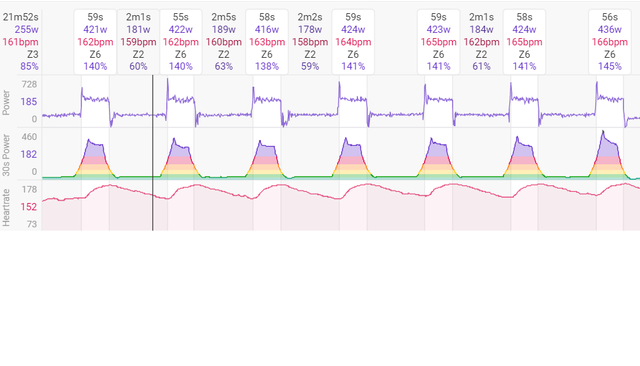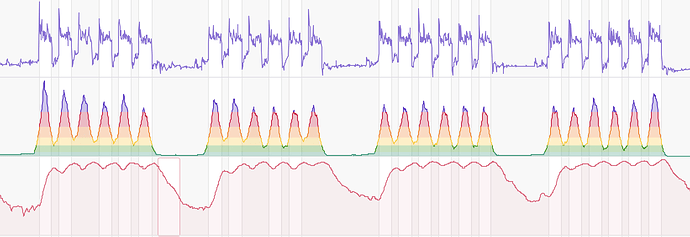Hi all,
Long time listener to the podcast, have learned a great deal so thanks for all the info you put out.
I’ve been training for a few years now, and have essentially been plateaued around the 315-330w FTP (consistently ~3.9wkg) for about 3 years, and despite increasing mileage and CTL I’ve not really moved this upwards. In races, the place I always struggle is the 3-8 minute efforts (generally climbs, however I think this is just because that’s when this kind of effort occurs). My peak 5-6 minute power is ~400w (so FTP is ~80% of this) and it’s recently been suggested to me that I’ve almost maxed out my FTP as a percentage of “VO2”, and therefore need to create headroom. My anaerobic and neuromuscular power is pretty good, it’s once I get past the 1-2 minute range that the problems surface.
I sort of guessed at this last winter and during the spring I hit a fairly big 12-15 week block of polarised to try and target this, however the results I saw were limited. I’ve since done a fairly big block of base/threshold work over the winter and thinking now could be the time to target my weakness again with racing looking doubtful.
I guess this prompts 4 questions for me and I’m interested to see what the thoughts are…
-
What are the best ways to target this, max efforts once a week building the time in zone and raw power, over say, 2 blocks of 3 weeks with a recovery week in the middle?
-
Will 2 blocks be enough to actually trigger measurable physiological adaptions/improvements?
-
I find 4-5 minute blocks of upper Coggan Z5 difficult to complete repeatedly, but 30-15s and 30-30s at the top of Z5 much more achievable. Is this because I’m compensating with my anaerobic pathways and therefore not really hitting my VO2 properly?
-
Is it a matter of just doing the longer ones and sucking it up as that’s where the improvements live?
Keen to hear what the much more experienced heads in here think!
Thanks in advance,
Stuart








